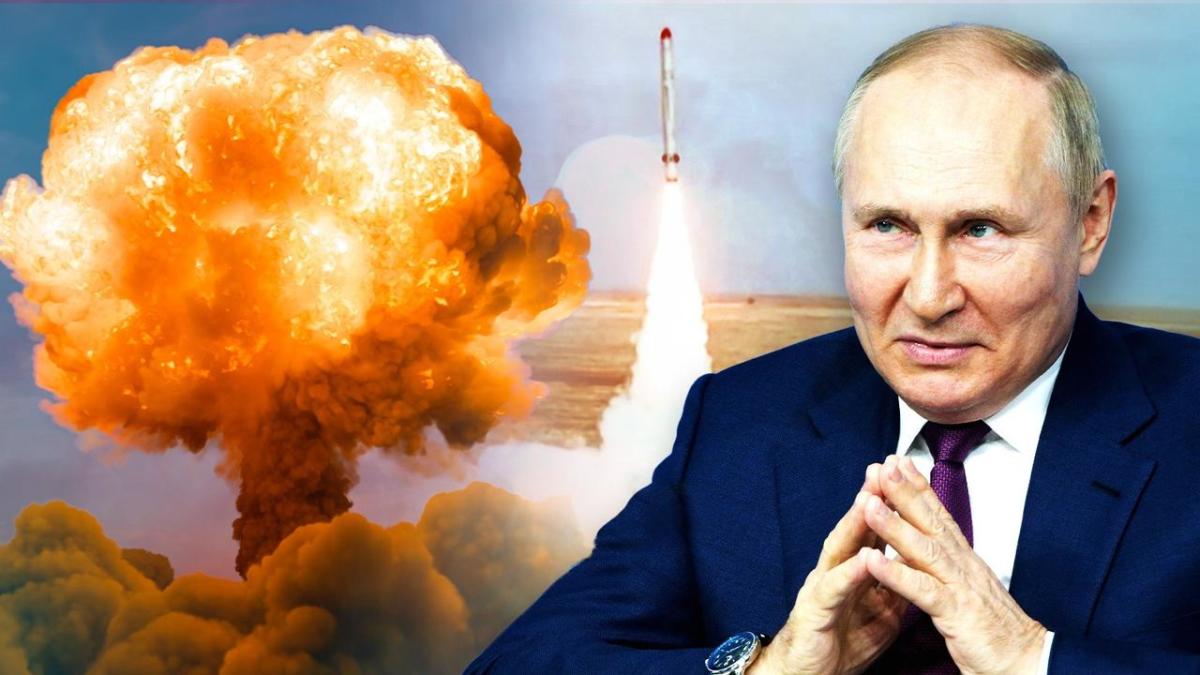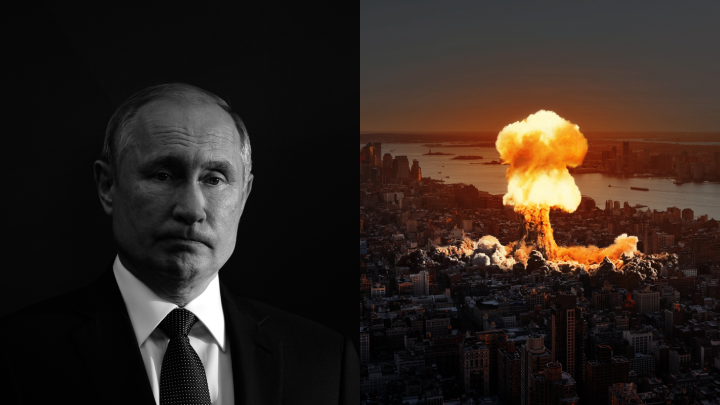Putin’s Chilling Declaration To The World: You Will See Hundreds Of Missiles In Air, Won’t Survive; Russia’s Growing Arsenal Of ‘Super Weapons’
In recent years, Russia has captured the world's attention by unveiling a series of cutting-edge military systems collectively known as "super weapons." These innovations span a spectrum of strategic and sub-strategic capabilities, from intercontinental ballistic missiles to hypersonic glide vehicles and underwater drones. Russia's pursuit of these advanced technologies reflects not only its determination to address emerging military threats but also it's evolving defense-industrial prowess. However, Putin's recent declaration has sent a chill across the world, as he cautions, "such a number of our missiles – hundreds, hundreds – would appear in the air that not a single enemy would have a chance of survival".

Russian President Vladimir Putin’s recent statements regarding the country’s strategic nuclear capabilities have reverberated across international defence circles.
Since the outset of Russia’s invasion of Ukraine in February 2022, Putin has consistently reminded the world of Russia’s nuclear prowess, asserting that no rational adversary would dare employ nuclear weapons against his nation.
Russia has been actively pursuing the integration of advanced asymmetric force-multiplier technologies into its existing and legacy weapons systems.
Hence, the defence industry is focused on developing new military robotics systems, successfully incorporating unmanned vehicles, especially aerial drones, into military operations.
Similarly, in the space sector, Russia is working on capabilities that could potentially counter and disrupt adversary satellite operations.
Moreover, Russia is developing AI technologies with the aim of disrupting Western command control systems, communication facilities and establishing information superiority.
The Brewing ‘Storm’
At the center of this nuclear discourse is the enigmatic ‘Storm Petrel,’ known as ‘Burevestnik’ in Russian; the ground-launched missile possesses the dual attributes of nuclear capability and nuclear propulsion, distinguishing it from conventional weaponry.
However, what truly sets it apart is its astounding range, with estimates from the International Institute for Strategic Studies suggesting it could cover distances of up to 20,000 kilometers, thus implying that the ‘Storm Petrel,’ when deployed anywhere within Russia, could potentially reach targets in the United States.
Another remarkable feature of this missile is its capacity to cruise at incredibly low altitudes, hovering between 50 to 100 meters above the ground; the stealthy characteristic renders it a formidable contender, capable of evading air-defence radars with remarkable ease.
These systems are primarily long-range, with one exception – the Kinzhal, which is sub-strategic; around the same time, details emerged about another sub-strategic system, the Tsirkon hypersonic ship-launched missile.
The United States Growing Unease
The United States Air Force’s National Air and Space Intelligence Center foresaw, way back in 2020, that once operational, this missile would furnish Moscow with a “unique weapon with intercontinental-range capability”.
Nonetheless, the journey of the ‘Storm Petrel’ has not been without its share of challenges.
Historical records reveal a series of test failures, most notably the tragic loss of five Russian nuclear specialists in 2019 due to an explosion during an experimental procedure in the White Sea.
While it was not officially confirmed, rumours within US intelligence circles suggested a connection to the Burevestnik; however, the West remained sceptical about the missile’s actual deployment for a considerable period.
In 2019, the Nuclear Threat Initiative, a security organization, predicted that the Burevestnik might take a decade before becoming operational.
This missile’s capability to remain airborne for extended periods, potentially spanning days, could revolutionize nuclear strategy, enabling it to circumnavigate the globe, elude defences, and strike with unpredictability.
Russia Not Backing Down
The recent strides in Russian strategic systems might introduce complexities into Moscow-Washington discussions on nuclear arms limitations, as reported by Reuters.
Earlier this year, Russia stepped back from the New START treaty, which aimed to cap nuclear arsenals and is scheduled to expire in 2026.
The innovation in military technology indicates Russia’s evolving approach to warfare, shaping new concepts of operation and military thought, particularly in the context of asymmetric advantages against more powerful adversaries.
The unveiling of new weapons systems, collectively referred to as Putin’s ‘superoruzhie’ (‘super weapons’) and first introduced in 2018, signals Russia’s intent to innovate within the defence-industrial sector, countering the perceived conventional military superiority of major power competitors like the United States and its NATO allies.

Russia’s ‘Super Weapons’
Herein, we look into the development of six new Russian weapons systems.
1) Sarmat: The RS-28 Sarmat intercontinental ballistic missile (ICBM) is a super-heavy, liquid-fueled ICBM developed by the Makeyev Rocket Design Bureau.
It is expected to replace the SS-18 ‘Satan’ in Russia’s Strategic Missile Forces. Sarmat is notable for its long-range (up to 18,000 km) and ability to approach targets via a fractional orbit, potentially bypassing existing missile detection and defence systems.
2)Avangard: This system combines a Soviet-era RS18A ICBM with the Yu-71 hypersonic glide vehicle (HGV). Avangard’s HGV travels at high speed in the upper atmosphere, making it difficult to intercept, and it can manoeuvre while in the atmosphere.
3) Poseidon: Poseidon is a nuclear-armed, unmanned underwater vehicle (UUV) designed for various roles, including engaging aircraft carrier groups, coastal fortifications, and infrastructure.
It is powered by a miniature nuclear reactor and has unlimited range. The Poseidon is carried and launched by nuclear-powered submarines.
4) Burevestnik: This ground-launched, nuclear-powered cruise missile has an unlimited range and the ability to fly at low altitudes and is difficult to detect due to its extended low-altitude flight.
5) Kinzhal: The Kinzhal air-launched ballistic missile (ALBM) is a sub-strategic system launched by MiG-31K missile carriers; it reaches speeds of Mach 10 and is capable of manoeuvring throughout its flight trajectory. It can carry both nuclear and conventional warheads.
6) Tsirkon: Tsirkon is a ship-launched hypersonic anti-ship missile that travels at high speeds (up to Mach 9) and follows a semi-ballistic ‘skip-glide’ trajectory.
Tsirkon is dual-capable, designed to target both land and sea-based high-value assets.

What does the Russian military want to achieve with these weapons?
It is likely that each of the different ‘super weapons’ will have been designed to perform distinct functions; thus, the purposes of these weapons vary.
The strategic systems are intended to ensure Russia’s ability to penetrate existing and future missile defence systems, therefore guaranteeing a second-strike capability. Thus, they could also be used as bargaining chips in future arms negotiations.
On the other hand, the sub-strategic systems are driven by concerns about vulnerability to rapid and decisive enemy attacks.
They give Russia the capability to threaten adversaries’ territory, reducing reliance on large-scale conventional or nuclear responses, thus aligning with a broader doctrine of “active defence” and “preemptive measures.”
The development of these “super weapons” showcases Russia’s defence industry’s ability to revive and adapt older designs, integrate technologies creatively, and maintain a high rate of innovation.
While they may not radically change the strategic nuclear balance, they present new challenges that require nuanced responses from Western nations.
The Last Bit: Regarding Western countries, Russia’s growing new military capabilities are either met with overreaction or downright contempt.
And the same has been true of the ‘super weapons’ programmes unveiled by Putin in 2018.
Experts have acknowledged the hypersonic missiles that Russia and China have but not the United States and its allies; the race for the same is picking up, though.
While the new weapons are unlikely to change the nature of warfare or to entirely upset existing Western military plans, however, at the same time, they will pose new challenges that will require proportionate and carefully calibrated responses from the West.




